Traffic rules for cyclists
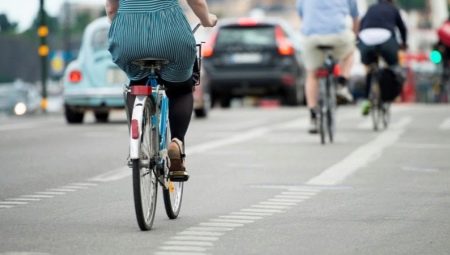
As soon as the warm spring season begins, the number of bicycles and other two-wheeled vehicles increases dramatically on the streets. Dozens or even hundreds of bike owners are pouring into the busy traffic flow.
According to experts, at least 75% of them have absolutely no idea about the rules of the road, leaving the city unprepared.
Requirements for the technical equipment of cycling
Even toddlers know what a bicycle is, but there is an absolutely precise definition in traffic rules. In accordance with it, a bicycle is a type of vehicle that can have two wheels and be set in motion due to the muscular energy of users by rotating the pedals, as well as the handles. Some types of e-bicycles may even have an engine, the power of which under continuous load varies in the range of 25 kW, the speed of such bikes is up to 25 km / h.
It becomes obvious that a bicycle is, first of all, one of the types of a vehicle, therefore all the basic provisions of traffic rules can be fully applied in relation to bikes.
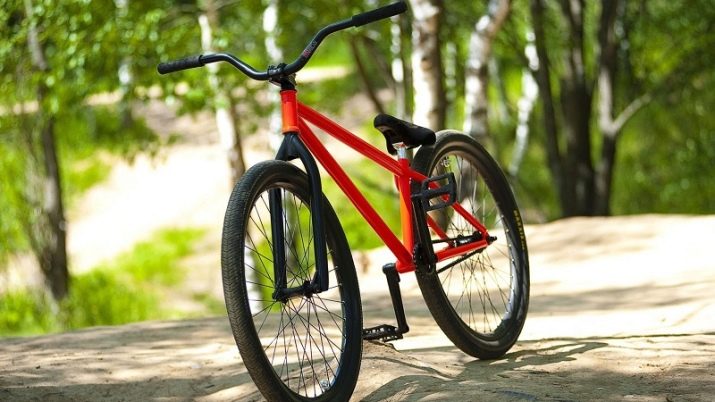
A cyclist is the person who controls the bike. If you drive it alongside, then the owner becomes a pedestrian. The driver of any vehicle, including a bike, must pay special attention to the technical condition of his two-wheeled vehicle.Every time before a ride, it is necessary to assess the serviceability of the bicycle, in particular, in the event of a breakdown of the brakes, as well as of the hitch or steering mechanism, any movement is strictly prohibited. In addition, restrictions have been imposed on the movement of bicycles in the evening and at night in the event that the rear parking lights and headlights are absent or not lit.
Some bike owners are making every effort to reduce the weight of their bike. For this, the removal of some structural elements, including the brakes, is used - such actions are considered as a violation of current standards and provide for administrative punishment.
Summarizing all of the above, we can outline the following actions that must be performed by the driver of a two-wheeled vehicle before leaving:
- check the technical condition of the tires;
- evaluate the performance of the sound device;
- make sure all handlebar fasteners are secure.
It is very important to monitor the performance of the lighting equipment: the headlights should be white, and the back should be bright red.
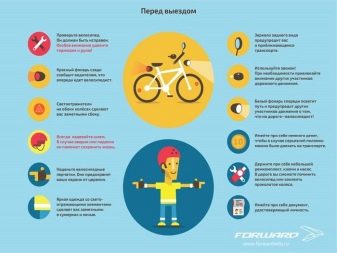

Age restrictions for cycling
The bicycle can be used by people of all ages. Moreover, each age category has its own specific features of movement on bikes. So, for users of the age group under 7 years old, movement is allowed exclusively on pedestrian or bicycle paths, on sidewalks, as well as within the boundaries of existing pedestrian zones.
Bike owners in the age group 7-14 years old are also allowed to move strictly on sidewalks and other pedestrian areas, as well as on equipped bike paths. Riding on the road, as well as on the side of the road, users under the age of 14 are strictly prohibited.
Little cyclists on the road face many dangers. Let's list the most common ones.
- A dangerous habit. Many cyclists, especially young cyclists, start moving without looking around or looking back. Meanwhile, it is when turning, "without looking", that cyclists are most often subjected to collisions with cars.
- Deserted street... On streets with little traffic, children very often ride a race, make turns and other tricks, drive onto the roadway and even cross it without looking around.
- Unregulated intersection... When driving off a deserted street, children often cross the intersection without slowing down, especially if the road goes downhill. In this situation, they do not notice the approaching transport, which often ends in tragedy.
Citizens over the age of 14 are treated as adult users, so they can move on bike paths, a specialized section of the road (if any), as well as on the carriageway in situations provided for by law.

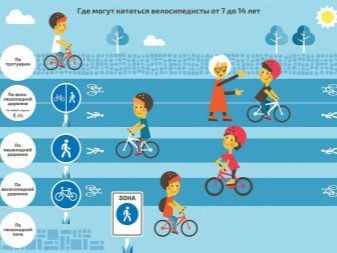
Do i need a driver's license?
These days, you don't need an e-bike or bike driver's license, but this was not always the case. During the Soviet era, a bicycle was not only equated to ordinary transport, but also had to be registered with a license plate. The metal plate contained 4-5 digits and the period of validity of the rights. It was attached to the bicycle, and the user was handed a document certifying his permission to drive. The rights without fail contained information about the type of document, as well as basic information about the owner (bike number, full name of the owner, place of registration, photograph, signature and seal). A set of rules for movement on city streets was attached to the document.
Since the bicycle is a street form of transport, then control over this vehicle was carried out by employees of the State Traffic Inspectorate (GAI). Any violation of the current traffic rules in the presence of its representatives was punishable by a fine, warning and even deprivation of a license or a license plate for the period established by law.In most cases, the seizure of the document resulted in turning to the left on a multi-lane lane, moving along a pedestrian crossing, as well as driving on a red light.
I must say that the bicycle in those years was not as common as it is today. Most often, it was bought as entertainment for kids and teenagers, as well as as the main means of transportation in villages and towns. Of course, bikes were ridden on the streets, but not in such numbers as they are now - accordingly, traffic police officers were more intimidating car owners than cyclists. Despite this, getting a license was not so easy - it required passing a mandatory exam, which was something like modern testing. Based on the test data, a license was issued, as well as license plates for one year.
At the end of this period, it was necessary to apply for an extension of the driver's license.
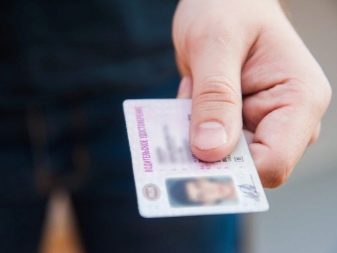
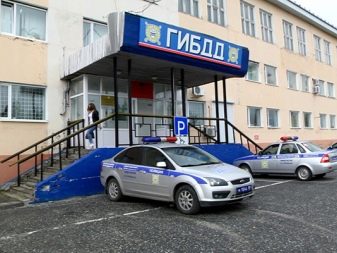
As we mentioned, you don't need a bike license right now. However, public opinion on this decision is ambiguous. Some believe that such a document is needed to improve the safety of all road users. Other bike owners see the rights as a Soviet relic and believe that this method of dealing with offenders is not particularly effective. Still others argue that the traffic police “crust” is ineffective without a developed bicycle infrastructure. However, there are also citizens who have not even heard of rights.
Not so long ago, there was information on the Internet that permits for driving bikes would return again, but they did not find any documentary confirmation. The question of when these rights will be introduced, and whether they will be introduced in principle, is still open. Nevertheless, there are requirements that establish the procedure for the movement of cyclists - they are stipulated in the traffic rules, and the bicycle driver must move in strict accordance with them.
I must say that in Russia there are not so many lanes for riding a bike, bike signs and special signs, in 90% of settlements this simply does not exist, and if there are, then in a very limited amount. Experts claim that Today in the Russian Federation there is an acute shortage of bike paths, and users are forced to move on the sidewalk or on the carriageway. At the same time, moving along the sidewalk, the bicycle driver already violates traffic rules to some extent, although the traffic police look at this "through their fingers" if the interests of pedestrians are not infringed upon.
Just imagine: if licenses reappear, then bicycle riders will have to constantly move along a busy highway, and this is by no means always safe. In other words, to begin with, our cyclists first of all need markings and bicycle signs with signs, and only then can they think about a document that will facilitate compliance with traffic rules, and not interfere with the safe movement of the cyclist.

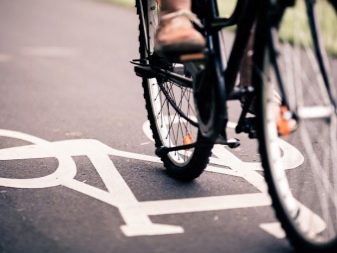
Where and how can you go?
Pay special attention: the maximum permissible speed of movement of a cyclist has established restrictions. So, within the city limits, it is not allowed to exceed the speed of 60 km / h, and in parks, adjacent territories, you can drive no faster than 20 km / h. Besides, cyclists are obliged to comply with the requirements of the established signs restricting movement. Ideally, riding a bike should be done on a dedicated cycle path, which is part of the main road, structurally separate from the roadway and pedestrian sidewalks. In conditions of underdeveloped cycling infrastructure, the law provides for some exceptions.
The main one is the likelihood of movement on the right side of the carriageway. Similar maneuvers are possible:
- in the absence of a cycle path or cycle path;
- when the lane for the bike is not formed, or it is difficult to move along it;
- when the driver transports bulky goods or trailers.
Output: if there is no part of the road equipped for moving on the bike, then you should drive on its right side.
The second exception is roadside driving. This option is valid in the following situations:
- when there is no cycle path or cycle path, or it is difficult to move along it;
- if there is no way to move along the right side of the road.
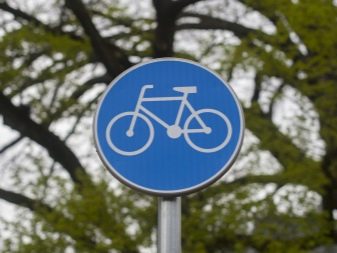
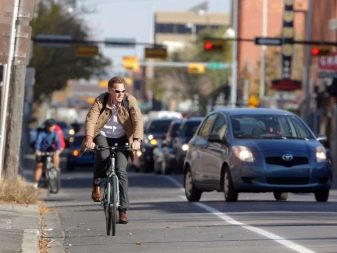
The third assumption is riding the bike on the sidewalk. This variant of movement is likely when there is no cycle lane, it is difficult to move along the right side of the road, and it is also not possible to ride on the side of the road.
In addition, an adult user can ride if he or she accompanies a second cyclist under 7 years old or carries a child in a specially equipped seat (in a bicycle wheelchair that is designed for use with a bike). Thus, pedestrian riding is considered an extreme option for cyclists.
We draw special attention to the fact that while riding, you must strictly follow the sequence established by the law when choosing the option to ride the bike.
There are a number of additional rules for group cycling. So, when several athletes are driving on the right side of the road, athletes can drive strictly in one row. The movement of a large column in 2 rows is permissible only when the maximum width of the bike is not more than 75 cm.When single-row riding, the column of athletes must be divided into small groups of 10 people, with two-row riding - into sections of 10 pairs.
For easier acceleration, it is advisable to keep the distance between these groups at the level of 90-100 m.
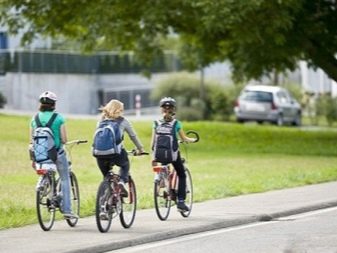

When driving in large detachments, special conditional gestures are adopted, which athletes send to their friends in the column:
- lowered hand - pit or other obstacle to the left;
- raised hand - pit or other obstacle to the right.
The first gesture is given by the guiding column, all athletes moving behind him must immediately repeat it.
When riding a bike on the pedestrian lane and on the sidewalk, it is extremely it is important not to interfere with pedestrians. In such a situation, the cyclist needs to dismount and walk like an ordinary pedestrian.
Important: pedestrians have an absolute advantage over bike drivers on the sidewalk, and the same applies to crossing intersections. In particular, turning to the right must be done according to the priority signs. Turning to the left when driving on a single-lane road can be done in one step along the trajectory shape. Turning to the right in other situations can be done in one of the following ways:
- cross the road like a pedestrian - just dismount and drive the bike next to you;
- in two steps —That is, driving straight ahead, then stopping at a turn, driving straight again.
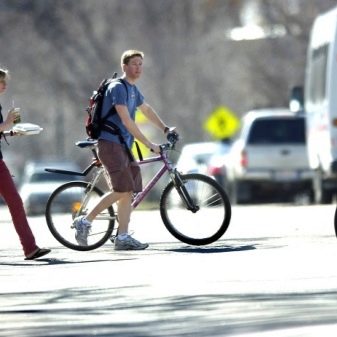
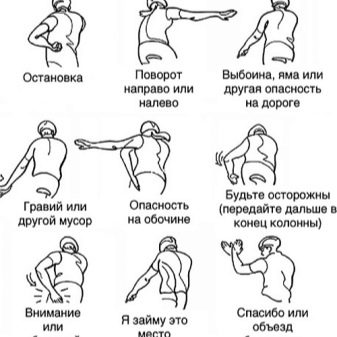
Arguments often arise between bike riders and pedestrians over who must give in to whom on the way. Based on the assumption that a cyclist is primarily a vehicle driver, he will have to let pedestrians pass on the pedestrian lane, and at crossings equipped with traffic lights, they must be allowed to cross the street, and only then cross themselves.
In accordance with the accepted norms, one of the most controversial areas for the joint movement of pedestrians and bike owners are bike paths. Some owners of two-wheeled vehicles believe that there are advantages to the cyclist in a given area, but this is not at all the case. The fact is that Pedestrians are not prohibited in any way on such special lanes, therefore, they will have to give way on the cycle path as well.
It is the responsibility of every bike rider to give a warning signal in advance of every planned maneuver, even if there is no moving vehicle in sight.
Modern models of bikes are equipped with turn signals, therefore, the supply of light signals indicating a turn is carried out here in the same way as with any other vehicle. However, if the transport does not have such devices, then signals about maneuvers can be given by hand:
- if you want to turn to the right or rebuild, you need to stretch out your right hand or bend your left arm at the elbow;
- if you want to turn left, raise your left hand or bend your right;
- a raised hand indicates an ambulance to stop.
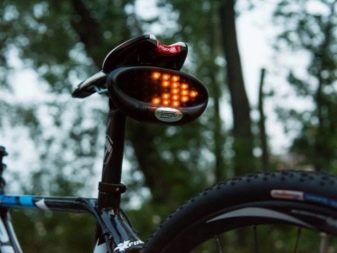

What is prohibited?
Traffic rules for bike drivers set a number of restrictions. So, it is unacceptable:
- ride a bike without holding the steering gear with your hands;
- carry trailers and loads protruding more than 50 cm outside the vehicle, or a load that interferes with safe driving;
- carry adult passengers if this does not correspond to the design features of the vehicle;
- carry babies under 7 years old without a special child seat;
- to roll adults;
- turn left or turn around on sections of the highway with tram lines, as well as on highways with more than one lane.
Besides, it is not allowed to tow bikes with other bicycles, in addition to towing bike trailers, structurally suitable for use with a bike.
Cyclists are not allowed on the motorway. An attempt to drive by grabbing onto the side of the truck can end in tragedy. In this case, the driver of the oversized vehicle does not see the cyclist sitting behind him and does not think at all about his safety. Keep in mind - each car can move at a speed of more than 60 km / h, when driving around a pit, as well as in case of emergency braking, a bicycle hitchhiker may find himself under the wheels of a truck.
Of course, in the current traffic rules, there is a prohibition on driving a bike or an electric bike for people under drugs, as well as alcoholic intoxication, just as it is impossible to transfer control of the vehicle to a person who is drunk.

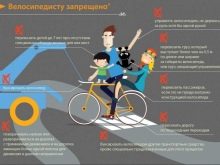

Penalties for rule violations
For violation of existing traffic rules on the territory of the Russian Federation, there is an administrative penalty, which sets monetary penalties:
- for driving a bicycle while intoxicated - from 1 to 1.5 thousand rubles;
- in case of violation of traffic rules without causing damage - the amount of the fine corresponds to RUB 800;
- in case of non-observance of traffic rules with concomitant damage - sanctions reach 1.5 thousand rubles;
- when creating significant obstacles to pedestrians and other road users - the fine will be 1 thousand rubles.
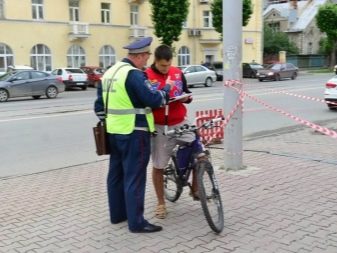

In the following video, you will find more information on traffic regulations for cyclists.





